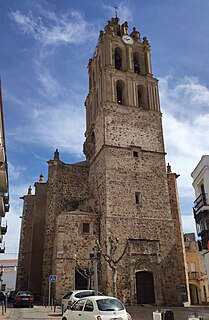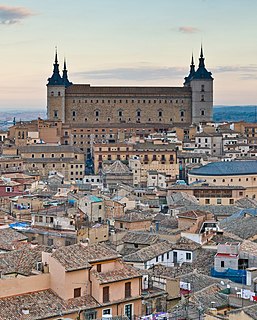 W
W20-N is a symbolic abbreviation used to denote the date of death of two of the best known and controversial figures in 20th-century Spanish history. The first date, 20 November 1936, near the end of the first year of the Spanish Civil War, marks the execution in Alicante of 33-year-old José Antonio Primo de Rivera, the founder of the fascist party, Falange Española, who became extolled as a cult figure during the years of post-civil war Francoist Spain led by Francisco Franco.
 W
WLegislative elections were held in Spain on 16 February 1936. At stake were all 473 seats in the unicameral Cortes Generales. The winners of the 1936 elections were the Popular Front, a left-wing coalition of the Spanish Socialist Workers' Party (PSOE), Republican Left (Spain) (IR), Esquerra Republicana de Catalunya (ERC), Republican Union (UR), Communist Party of Spain (PCE), Acció Catalana (AC), and other parties. Their coalition commanded a narrow lead over the divided opposition in terms of the popular vote, but a significant lead over the main opposition party, Spanish Confederation of the Autonomous Right (CEDA), in terms of seats. The election had been prompted by a collapse of a government led by Alejandro Lerroux, and his Radical Republican Party. Manuel Azaña would replace Manuel Portela Valladares, caretaker, as prime minister.
 W
WThe Battle of Almendralejo was a battle and massacre in Almendralejo, Spain, in August 1936, during the first stages of the Spanish Civil War.
 W
WAntonio Azarola y Gresillón was a Spanish Navy officer, rear admiral of the Spanish Republican Navy. He was executed by firing squad on 4 August 1936 at the Ferrol Naval Base in Galicia, NW Spain, by rebel Navy officers for refusing to join the coup of July 1936 against the Spanish Republic that triggered the Spanish Civil War.
 W
WThe Battle of Cerro Muriano took place during the Spanish Civil War in 1936.
 W
WThe Battle of Guadarrama was a battle involving troops loyal to the Second Spanish Republic in the Guadarrama Range at the beginning of the Spanish Civil War.
 W
WThe Battle of Irún was the critical battle of the Campaign of Gipuzkoa prior to the War in the North, during the Spanish Civil War. The Nationalist Army, under Alfonso Beorlegui, captured the city of Irún cutting off the northern provinces of Gipuzkoa, Biscay, Santander, and Asturias from their source of arms and support in France.
 W
WThe Battle of Seseña was an ill-fated Republican-Soviet assault on the Nationalist stronghold of Seseña, near Toledo, 30 km south of Madrid in October 1936 during the Spanish Civil War. After the fall of Talavera de la Reina and Toledo in September 1936, the Nationalist troops pushed towards Madrid and in October they were 30 km from the city. The Republican government which had received new Soviet weapons decided to launch a counteroffensive in order to stop the Nationalist offensive at Seseña. The attack failed and the Nationalists resumed their advance towards Madrid. The battle is notable for being the first time that tank warfare was seen in the Spanish War and for the use by Nationalist troops of Molotov cocktails against Soviet T-26 tanks.
 W
WThe Battle of the Sierra Guadalupe, also known as the Tagus Campaign, was a continuation of the Nationalist Army's race north toward Madrid in the early stages of the Spanish Civil War. In mid-late August 1936, the three Regulares columns of General Yagüe's Army of Africa dashed through the Sierra de Guadalupe Mountains, also known as Sierra de Villuercas, in central Spain and forded across the Tagus River, capturing several towns and routing the Republicans in a succession of rapid advances.
 W
WBilbao's Iron Ring, is a fortification around Bilbao in the Basque Country, Spain. It was constructed hurriedly by the Basque Government during the Spanish Civil War to help defend the city from the Nationalist forces approaching as part of their War in the North campaign.
 W
WThe Campaign of Gipuzkoa was part of the Spanish Civil War, where the Nationalist Army conquered the northern province of Gipuzkoa, held by the Republic.
 W
WCara al Sol is the anthem of the Falange Española de las JONS. The lyrics were written in December 1935 and are usually credited to the leader of the Falange, José Antonio Primo de Rivera. The music was composed by Juan Tellería and Juan R. Buendia.
 W
WThe Spanish Civil War (1936–1939) broke out with a military uprising in Morocco on July 17, triggered by events in Madrid. Within days, Spain was divided in two: a "Republican" or "Loyalist" Spain consisting of the Second Spanish Republic, and a "Nationalist" Spain under the insurgent generals, and, eventually, under the leadership of General Francisco Franco.
 W
WThe Convoy de la Victoria was a Spanish naval battle on 5 August 1936 in the Strait of Gibraltar during the Spanish Civil War, between the escort of a Nationalist convoy and the Republican Navy destroyer Alcalá Galiano.
 W
WThe July 1936 military uprising in Melilla occurred at the start of the Spanish Civil War. The rebels seized the main garrisons of the Spanish Army in Africa and by 18 July had crushed the resistance of the army officers loyal to the Republican government. The supporters of the Second Spanish Republic were detained or shot.
 W
WThe siege of the Loyola barracks was a siege and uprising at the military barracks in the Loyola neighborhood of San Sebastián, Spain, on 21 July 1936. It was part of the Spanish coup of July 1936 against the Second Spanish Republic, which led to the start of the Spanish Civil War.
 W
WThe Battle of Majorca, also known as the Majorca Landings, was an amphibious landing of Republican forces early in the Spanish Civil War aimed at driving the Nationalists from Majorca and reclaiming the island for the Republic. After some initial tactical success, the expedition, commanded by Captain Alberto Bayo, ended in failure when the Nationalists counterattacked with ground troops and massively superior air power and drove the Republicans into the sea. So confident were the Republicans in their prediction of victory they optimistically called the operation "la reconquista de Mallorca" - "the reconquest of Majorca".
 W
WThe siege of the Montaña barracks was the two-day siege which marked the initial failure of the July 1936 uprising against the Second Spanish Republic in Madrid, on 18–20 July 1936, at the start of the Spanish Civil War. The bulk of the security forces in Madrid remained loyal to the government, and supported by workers' militias, crushed the uprising.
 W
WThe Moscow Gold, or alternatively Gold of the Republic, was 510 tonnes of gold, corresponding to 72.6% of the total gold reserves of the Bank of Spain, that were transferred from their original location in Madrid to the Soviet Union a few months after the outbreak of the Spanish Civil War. This transfer was made by order of the government of the Second Spanish Republic, presided over by Francisco Largo Caballero, through the initiative of his Minister of Finance, Juan Negrín. The term also encompasses the subsequent issues relating with the gold's sale to the USSR and the use of the funds obtained. The remaining fourth of the Bank's gold reserves, 193 tonnes, was transported and exchanged into currency in France, an operation which is also known by analogy as the "Paris Gold".
 W
WThe Siege of Oviedo was a siege in the Spanish Civil War that lasted from July 19 until October 16, 1936. The town garrison, under the command of Colonel Antonio Aranda Mata, declared for the Nationalist uprising and held out until relieved by a Nationalist force.
 W
WThe Paracuellos massacres were a series of mass killings of civilians and soldiers by the Republican faction of the Spanish Civil War. It took place before and during the Battle for Madrid during the early stages of the war. The death toll remains the subject of debate and controversy.
 W
WThe Spanish Revolution was a workers' social revolution that began during the outbreak of the Spanish Civil War in 1936 and resulted in the widespread implementation of anarchist and more broadly libertarian socialist organizational principles throughout various portions of the country for two to three years, primarily Catalonia, Aragon, Andalusia, and parts of the Valencian Community. Much of the economy of Spain was put under worker control; in anarchist strongholds like Catalonia, the figure was as high as 75%. Factories were run through worker committees, and agrarian areas became collectivized and run as libertarian socialist communes. Many small businesses like hotels, barber shops, and restaurants were also collectivized and managed by their workers.
 W
WThe July 1936 military uprising in Seville was a military uprising in Seville, Spain on 18 July 1936, which contributed to the start of the Spanish Civil War. The 17–18 July coup failed in the Andalusian cities of Malaga, Jaen and Huelva, but succeeded in Cordoba, Granada, Cadiz and in the capital city, Seville. The city's garrison, led by Queipo de Llano, occupied the city and carried out a bloody repression. In August 1936, the Nationalists started their advance towards Madrid from Seville.
 W
WThe Siege of Gijón, one of the first actions in the Spanish Civil War, saw the anarchist militia crushing a small Nationalist garrison in Gijón, between July 19 and August 16, 1936. The militia - nominally fighting in defense of the Republic - laid siege to the Simancas barracks in the city of Gijón. These were defended by about 180 soldiers and Guardia Civil officers who had risen in support of General Franco's rebellion and seized the post for the Nationalists. The battle was remarkable for its viciousness and the stubbornness of the besieged.
 W
WThe Siege of the Alcázar was a highly symbolic Nationalist victory in Toledo in the opening stages of the Spanish Civil War. The Alcázar of Toledo was held by a variety of military forces in favor of the Nationalist uprising. Militias of the parties in the Popular Front began their siege on July 21, 1936. The siege ended on September 27 with the arrival of the Army of Africa under Francisco Franco.
 W
WThe Spanish coup of July 1936 was a nationalist and military uprising that was designed to overthrow the Spanish Second Republic but precipitated the Spanish Civil War; Nationalists fought against Republicans for control of Spain. The coup itself was organised for 17 July 1936, although it started the following day in Spanish Morocco, and would result in a split of the Spanish military and territorial control, rather than a prompt transfer of power. Although drawn out, the resulting war would ultimately lead to one of its leaders, Francisco Franco, becoming ruler of Spain.
 W
WThe 1936 coup in the Albacete province was part of a nationwide military-civilian revolt. On July 19–20 the rebels easily gained control of the entire province, but it remained an isolated island of insurgency surrounded by areas controlled by the loyalists. On July 21 loyalist troops advancing from the Levantine coast made first incursions into the province and with little combat they advanced West during the next few days. Following a few hours of urban fighting, on July 25 the rebels surrendered in Albacete and soon the entire province fell back under the government control.